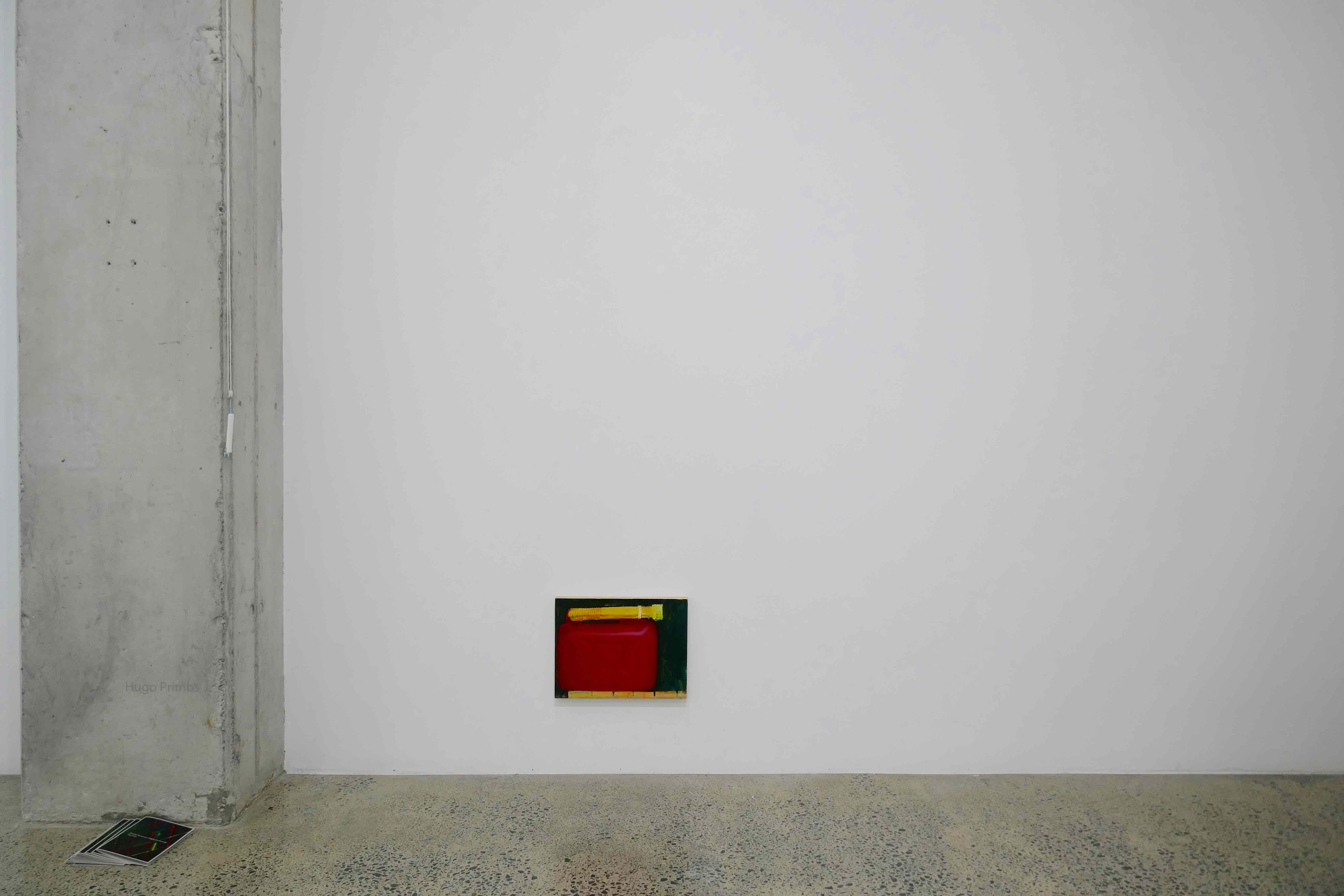

Hugo Primbs
Uncanny Ecounters: Staging the Everyday
This research project investigates how painting, functioning as a metaphorical stage, provides a contextual ‘platform’ for the relationship between an audience and the ‘performance event’ of paint on canvas. Focusing on the representation of repetitive objects of (my) everyday experience, this thesis explores how creating an unsettling sense of the uncanny within the painted ‘doubles’ of these encountered ‘props’ might challenge perceptions of the mundane. This feeling of unease is entirely subjective and evades conclusive definition. In one of his possible definitions for this psychological phenomenon, psychologist Sigmund Freud suggests that the uncanny is a sense of unease leading back to something once very familiar.* By removing strangely (un)familiar objects from their original context and re-presenting them on the ‘stage’ of the canvas, painting becomes a catalyst for genuine observation.
*Sigmund Freud,‘The “Uncanny”’, in The Standard Edition of the Complete Psycho- logical Works of Sigmund Freud, trans. James Strachey, Anna Freud, and Alix Strachey, vol. Volume XVII (1917-1919) (London: The Hogarth Press and The Institute of Psycho- Analysis, 1955).
This practice-led research project investigates how painting, functioning as a metaphorical stage, provides a contextual ‘platform’ for the relationship between an audience and the ‘performance event’ of paint on canvas. It examines the ways paint can incite the psychological phenomenon of the uncanny through the use of a range of intuitive and consciously applied painting methods. Focusing on the representation of repetitive objects of everyday experience, this thesis explores how creating an unsettling sense of the uncanny within the painted ‘doubles’ of these encountered ‘props’ might challenge perceptions of the mundane. This feeling of unease is entirely subjective and evades conclusive definition. Such a feeling is achieved in the artworks discussed in this exegesis through the use of strangely familiar subject matter and experimentation with repressive painting devices such as shallow depth of field, tight cropping, warped perspective, colour interaction and a manipulated use of chance.



